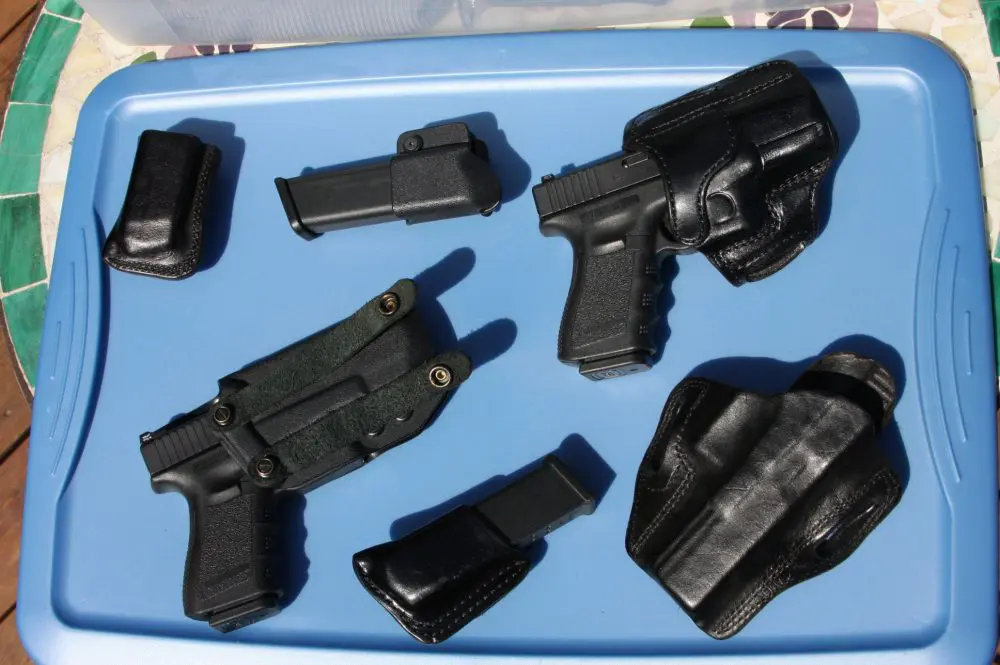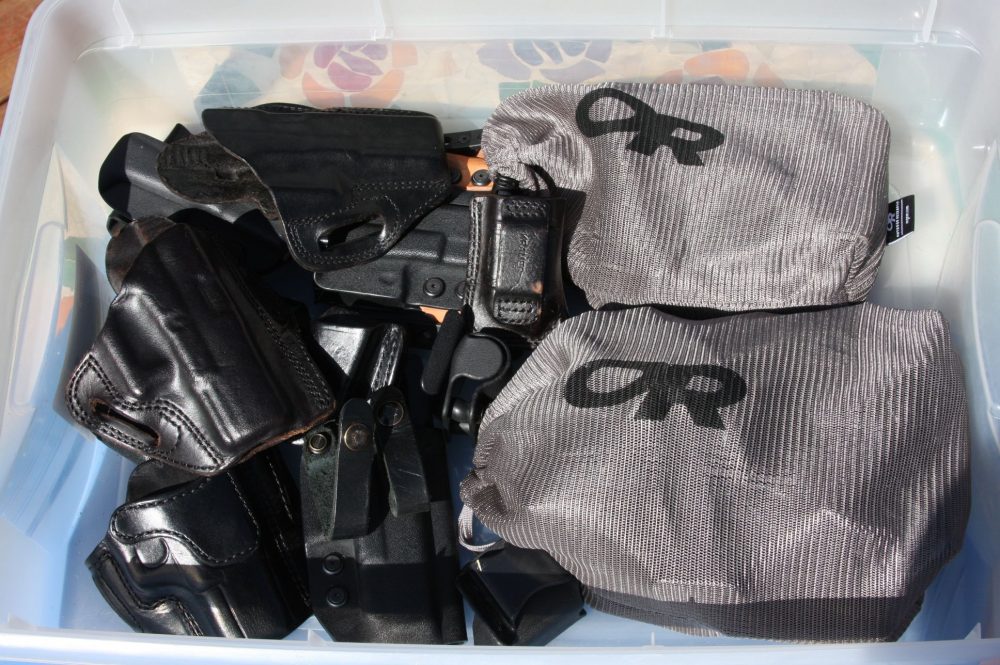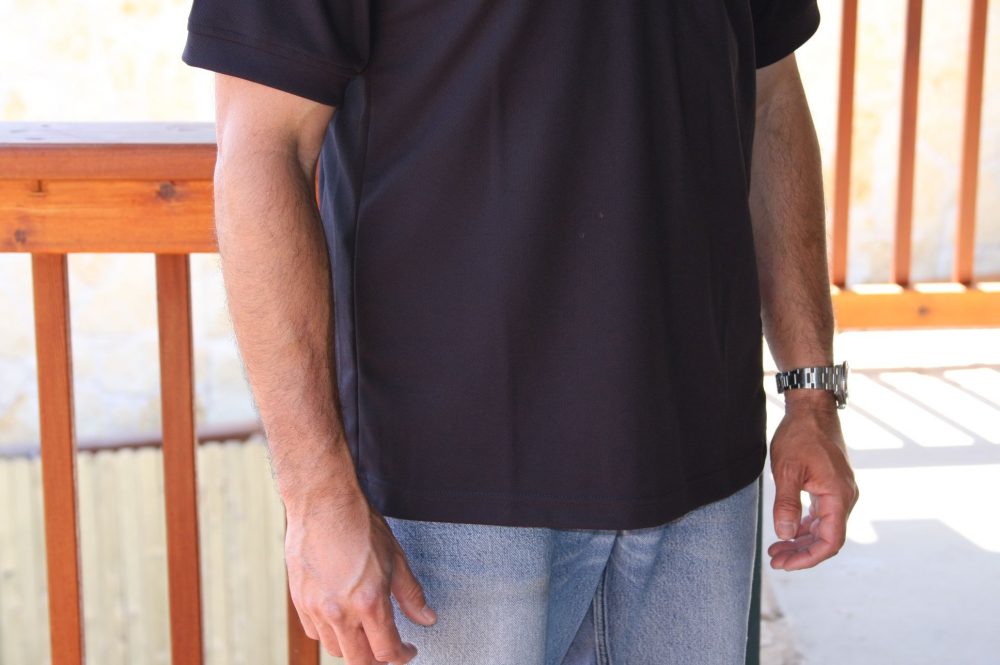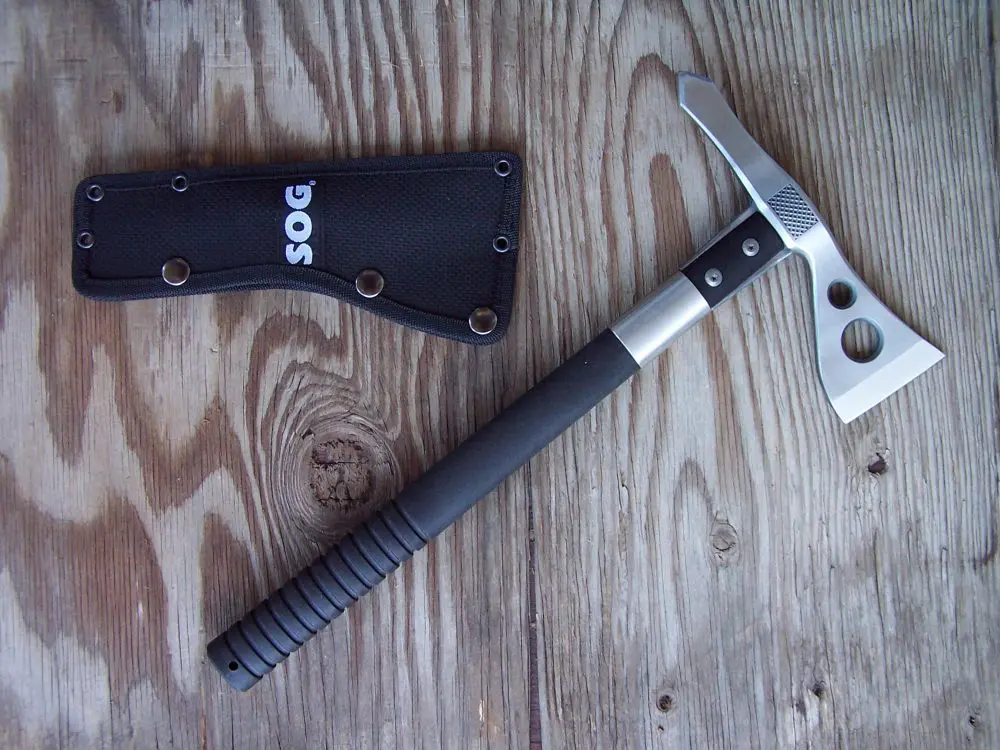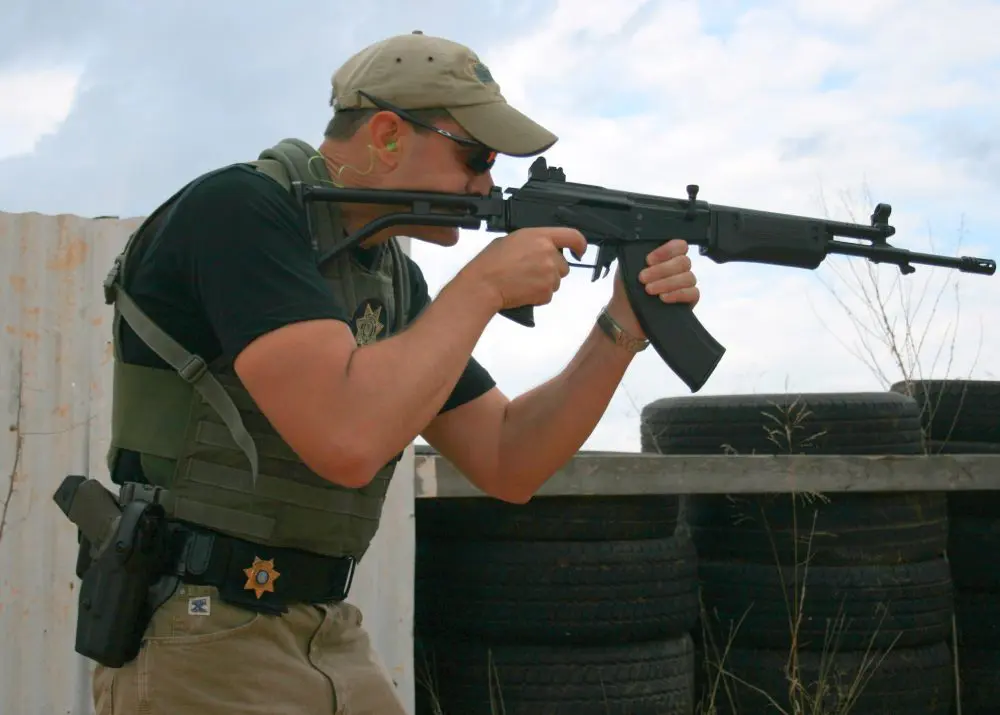An assortment of holsters and accessories for a particular platform. There is no single answer for every situation.
As part of my Naval profession, I was required to carry a concealed sidearm. I had to work in some pretty inhospitable places, where I definitely wanted the means to protect myself, but also had to blend in and avoid drawing attention to myself.
Some places were easier than others due to the climate or the situation, while in others I had to work really hard to avoid printing.
Concealed carry was also in its infancy back then, so many of the pioneers were still cutting their teeth on design and materials, which means we were the guinea pigs. Many of our lessons learned can be seen in the concealed carry evolution: it’s part equipment, art form and mindset.
Carrying concealed can be broken down into high profile and low profile. In high profile, you might mask the sight of the weapon, but everyone knows you’re carrying. In low profile, the physical features of the firearm are obscured to the deepest cover. In the latter condition, you are not only trying to conceal the presence of a firearm, but the evidence you were carrying in the first place.
This article focuses on low profile, since it makes up the majority of modern-day concealed carry. To effectively carry concealed in the low-profile mode, you are basically talking about an inside-the-waistband (IWB) holster.
At some point, you might have a box like this with a dozen or so holsters. The bags compartmentalize gear by weapon platform for ease of identification.
Table of Contents
CONCEALED-CARRY BASICS
Before we get too in-depth, let’s talk about some principles. You want your presentation from concealed to be as close to your normal drawstroke as possible. Obviously it will be somewhat different, but too much deviation means you have two different drawstrokes with two different training conditions and standards.
While it doesn’t sound like such a big deal, in the overall picture it is huge. If the drawstroke is very different, you will need to practice the movements to the point they become second nature. I think that is asking a lot for the average person who doesn’t have this as a professional requirement, so keep it simple.
Next is the decision to deviate from your primary firearm to a firearm that is ultra-compact or a different firearm entirely. You reach a point of diminishing returns when you go so small that you conceal it well but have a difficult time meeting the shooting standards or performance criteria.
Author conceals Glock 19 in IWB holster with spare magazine.
SUBCOMPACTS
A few points on the performance criteria. Let’s start by addressing the saying “Any gun is better than no gun.” I am not a big fan of calibers smaller than 9mm for concealed carry. Pistols are notoriously poor fight stoppers. They are convenient and the tool I use to fight my way home to my rifle. The problem with these smaller packages is that they have to work that much harder to generate the minimum terminal performance results.
Going down in caliber below 9mm greatly reduces terminal performance. I break the subject of subcompacts down into three points to consider: the gun has to fire reliably, penetrate at least 12 inches, and you have to hit your target.
The smaller guns are nice and certainly conceal more easily, but that doesn’t make them better. Typically they are less reliable than their larger or full-size cousins. Their shorter barrels make it difficult to achieve the minimum penetration depth—even the 9mm subcompacts have to work for it.
Probably the biggest obstacle to overcome is the difficulty shooting subcompacts. Trying to maintain the same shooting standards requires a pretty good amount of regular practice. It certainly is worth it, but I don’t see many shooters putting in the practice.
One last variable to consider is capacity. For me, anything less than ten rounds is unacceptable.
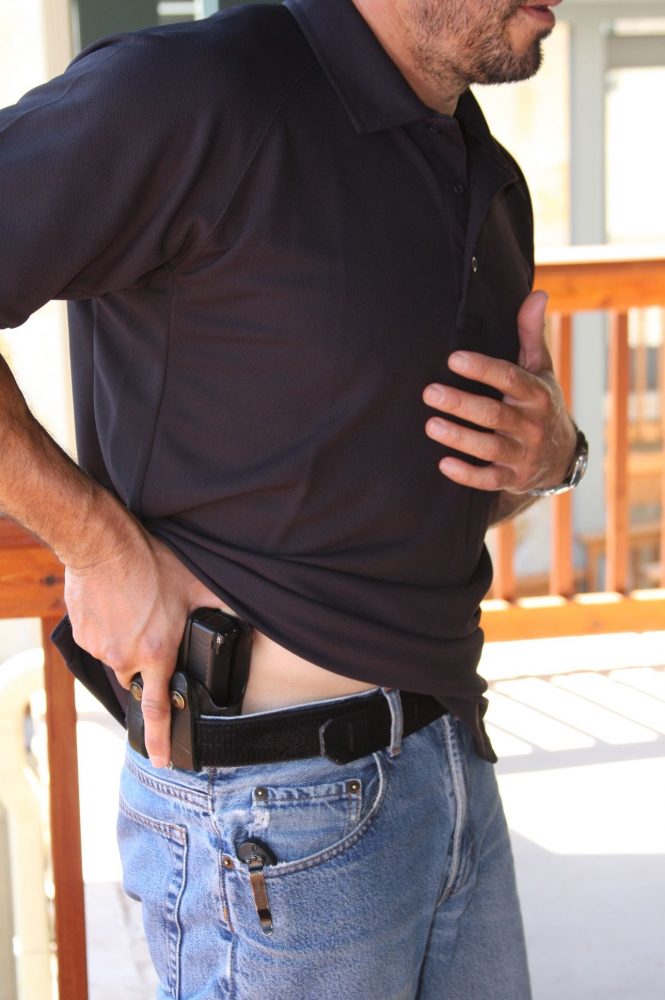
HOLSTER CONSIDERATIONS
The IWB holster can be made of plastic or leather. While there are hybrids, these will be the two most common choices. When selecting your holster, make sure it’s designed for the specific firearm you will be carrying.
The holster should retain the pistol so it stays secure during normal wear. It should adequately protect the trigger and trigger guard so nothing can get into the trigger guard when the firearm is holstered.
Lastly, the holster should retain its shape when the firearm is removed. Since the holster is inside your waistband, the belt and body pressure can collapse the holster’s opening and make it difficult or dangerous to reholster.
How the holster attaches to your belt is next. You’ll notice how I stated attached to your belt. I have used several different types of fasteners or hooks and, while they are somewhat effective, if I had a dollar for every time somebody drew their firearm along with their holster, I would probably have about $37 more in the bank.
For convenience, I suggest snaps with individual loops so you can maneuver the holster on your hip or around the belt loops of your pants. Snaps work well and are pretty simple. While they are sometimes a pain to snap into place, they are secure once snapped shut.
The belt and the belt loops of your pants keep the whole package attached to your body. Your belt must adequately support the weight of the equipment. If it is more of a dress belt, you might find it sagging or constantly needing adjustment, which are sure giveaways to a keen eye.
Belt material varies among leather, nylon, and some hybrids. Like holster material, your selection is personal preference and often based on trial and error.
CC CLOTHING
Now comes the art form—the attire. There are lots of folks who will print just by the clothes they wear. They may be the latest trend, but they also suggest a certain stereotype and that might draw more attention than you want.
Because the IWB goes inside your pants, consider buying pants one waist size larger. This should give you breathing room—literally—when you have the firearm concealed. I also look for belt loops that are directly on the side. This allows me to place the holster in the same location as an open-top holster.
The individual holster loops can fit around the belt loops and offer good control so the holster stays put during daily movement. You don’t want daily movement to shift your holster even slightly, because it can force you to change your drawstroke.
The key to your wardrobe is to have a wide selection. Avoid concealed-carry specific modifications. I have seen Velcro and counterweights added to clothing to facilitate a clean drawstroke. The problem is if you get in the habit of relying on those methods, you greatly reduce your wardrobe and increase the chances of printing. You should be able to carry concealed effectively with anything off the rack.
Your clothing should work with your holster and belt selection. Consider having more than a single IWB holster and belt, as some models work better for certain types of clothing. Here is where mixing and matching between leather and plastic holsters and leather and nylon belts can provide you with lots of combinations that should accommodate the various clothing and social requirements.
Utilize simple camouflage techniques such as opting for darker clothing and clothing with varied patterns. Avoid light colors and materials. While you can still carry concealed, lighter colors can reveal the darker holster and firearm. Lighter materials drape over the firearm and holster, leaving an image or print of the concealed firearm.
CC MINDSET
Mindset is important. I am not talking solely about the Combat Mindset, but a lifestyle change as well. You will of course need to be well versed in the legalities for carrying concealed in your region.
In addition, your activities will need to be married with your method of carry. That is one reason why selection of your equipment is so important. If you are uncomfortable or not confident, you will constantly be fidgeting and that will eventually let the cat out of the bag that you are armed.
Simple tasks, like sitting in a chair or bending over to pick up items, need to be done with more thought so as not to print. While equipment and clothing are important, it’s the mindset that frames the two for success.
SUMMARY
Carrying concealed is a personal choice and there are no one-size-fits-all answers. If one intends on pursuing this God-given right, take time to invest in research and testing. Understand that you will probably purchase several holsters until you find the one that works best for you and your conditions.
Following the principles outlined here will point you in the right direction. Paying attention to your wardrobe and how you intend to conceal your firearm give you the best chance for truly concealing said firearm. Your mental preparation and training are equally important in order to be competent and confident.
There are lots of questions you have to ask yourself early on. Seek out qualified instruction to help you find the answers, and always remember the responsibility you bear.
Jeff Gonzales was a decorated Navy SEAL and is the Director of Training for Trident Concepts, LLC. Training information is available at www.tridentconcepts.com.
